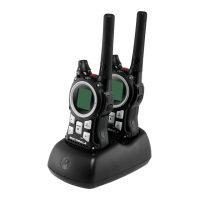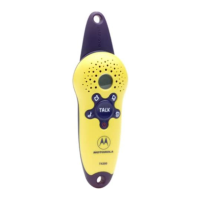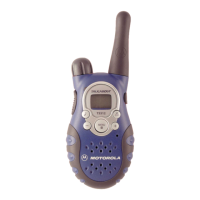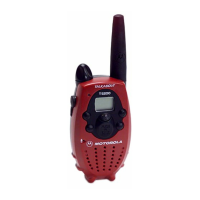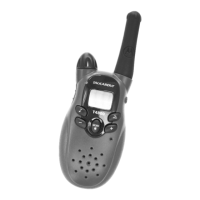Frequently Asked Questions
Will TalkAbout 101 radios work with other
two-way radios?
Radios operating on the same frequency and code can com-
municate with each other. TalkAbout 101 radios can communi-
cate with TalkAboutfTalkAbout Plus/200/250 (on all channels);
Sport 7!7X, 10X and TalkAbout DistancelDPS (channels 1-7).
Why
are
there so many channels and codes?
The more channels and codes, the less channel congestion. If
people use the radios in congested areas, i.e. malls, zoos, ski
areas, the choice of more channels and codes reduces inter-
rupted communications. If you hear other conversations, sim-
ply change your channel to find a less busy channel to talk on.
How many radios can communicate in the same group?
As many as you want, as long as the radios are set to the
same channel and code and they are within range of each
other.
How far do the radios talk?
TalkAbout 101 radios are "line of sight" meaning if the user can
see their talk partner, the radios can talk up to 2 miles. Heavy
foliage and cement structures will adversely affect range. If
skiers are on opposite sides of a mountain, chances are they
will not be able to communicate. If they are on the same side
of the mountain, however, the communications should be
clear.
How durable are TalkAbout 101 radios?
All Motorola radios are subjected to and must pass the Motor-
ola Accelerated Life Test. This test simulates 5 years of field
stress including 4 foot drops on to concrete floors. Motorola
backs this quality with a limited 1 year warranty to ensure cus-
tomer satisfaction.
Safety Information
J
Exposure to Radio Frequency Energy
The design of your Motorola two-way radio, which gen-
erates radio frequency (RF) electromagnetic energy
1
(EM E), complies with the following national and interna-
tional standards and guidelines.
The Relevant Guidelines and Standards Are:
- FCC Report and Order FCC 96-326 (August,
1996)
- American National Standards Institute (C95-1 -
1992)
- National Council on Radiation Protection and
Measurements (NCRP - 1986)
- International Commission on Non-Ionizing
Radiation Protection (lCNRP - 1986)
- European Committee for Electrotechnical
Standardization (CENELEC)
-Env. 50166-1 1995E - Human Exposure to
Electromagnetic Fields Low Frequency (OHz to
10kHz)
-Env. 50166-2 1995E - Human Exposure to
Electromagnetic Fields High Frequency (10kHz
to 300GHz)
-Proceedinqs of SC 211/81996 - Safety
Considerations for Human Exposure to E.M.F.'s
from Mobile Telecommunications Equipment
j
Toa::~ef:~::;,::~::::~~::::~:~oH:n~:rethat
• exposure to RF energy is within the guidelines in the
above standards, the following operating procedures
should be observed:
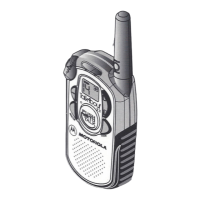
